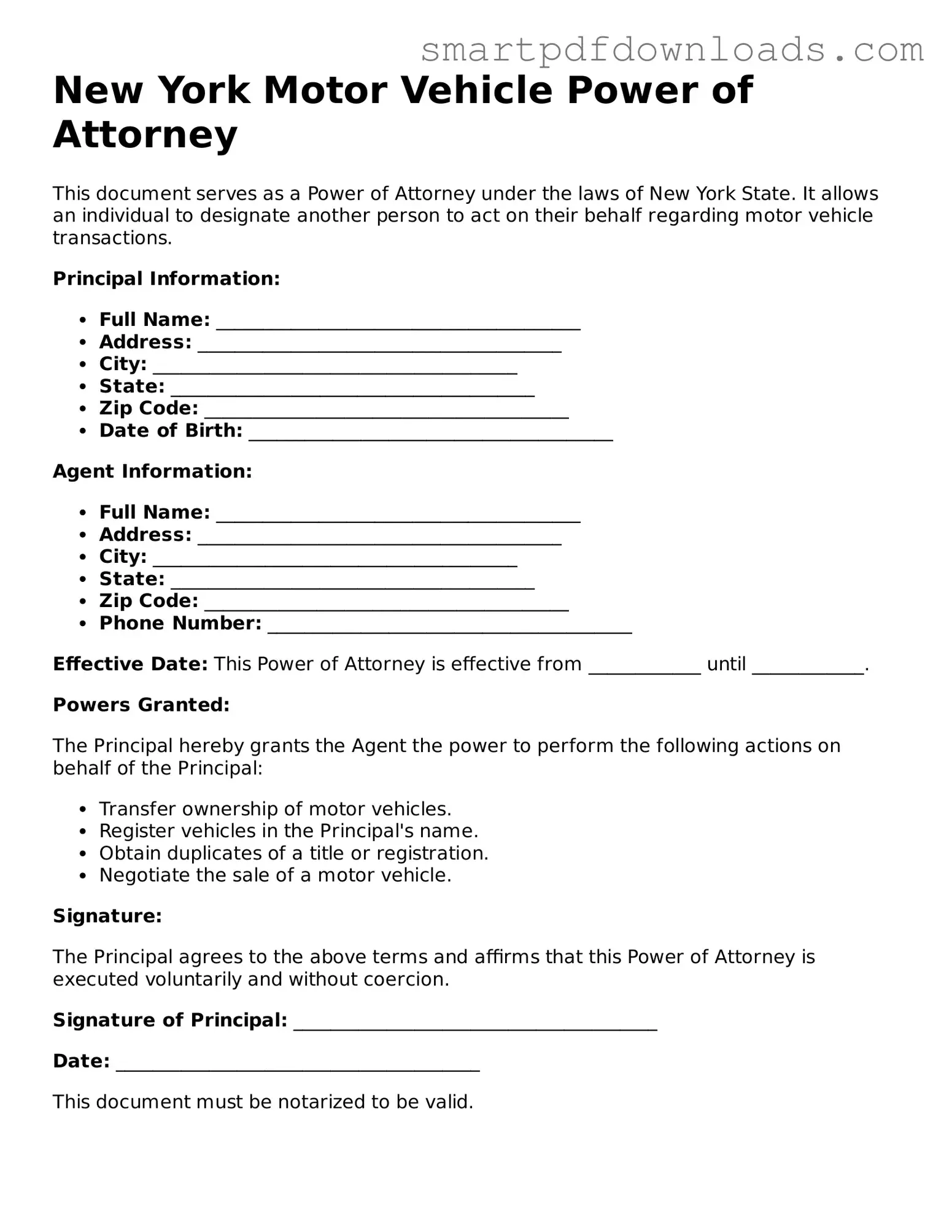New York Motor Vehicle Power of Attorney
This document serves as a Power of Attorney under the laws of New York State. It allows an individual to designate another person to act on their behalf regarding motor vehicle transactions.
Principal Information:
- Full Name: _______________________________________
- Address: _______________________________________
- City: _______________________________________
- State: _______________________________________
- Zip Code: _______________________________________
- Date of Birth: _______________________________________
Agent Information:
- Full Name: _______________________________________
- Address: _______________________________________
- City: _______________________________________
- State: _______________________________________
- Zip Code: _______________________________________
- Phone Number: _______________________________________
Effective Date: This Power of Attorney is effective from ____________ until ____________.
Powers Granted:
The Principal hereby grants the Agent the power to perform the following actions on behalf of the Principal:
- Transfer ownership of motor vehicles.
- Register vehicles in the Principal's name.
- Obtain duplicates of a title or registration.
- Negotiate the sale of a motor vehicle.
Signature:
The Principal agrees to the above terms and affirms that this Power of Attorney is executed voluntarily and without coercion.
Signature of Principal: _______________________________________
Date: _______________________________________
This document must be notarized to be valid.
